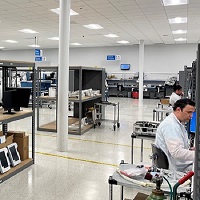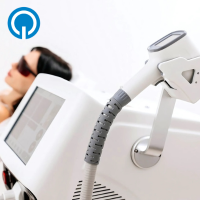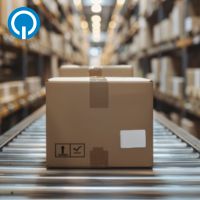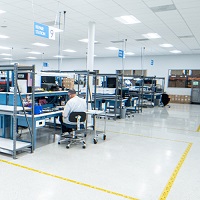
Useful Hacks to Decrease Medical Device Supply Strain during the COVID-19 Crisis
COVID-19 has (and will) have far-reaching effects on the medical device industry and their subsequent supply chains.
While many healthcare companies are exempt from shuttering as “essential operations” during this time, the subsequent demand for specialized products is overwhelming for many manufacturers since many were not prepared for the rapid spread of this pandemic. While increasing manufacturing production is the obvious solution to this challenge, other strategies can be put in place in the interim to try and mitigate supply issues.
This will ensure that healthcare organizations are able to give customers access to the critical devices they need, as well as provide patients with treatments in this tumultuous time.
Tapping Evaluation, Loaner and Exchange Pools
For medical device manufacturers offering evaluation and loaner programs to existing and first-time buyers, these supplies could be the hidden gem needed when made available to customers in need of critical equipment when supplies are running scarce. Many medical OEM’s offer evaluation units to potential clients to try out the device in a “real-world” setting before the actual purchase is made.
From a healthcare professional’s standpoint or a patient’s, products and technologies sent out for evaluation programs take on greater importance and aren’t meant to just provide general feedback. The goal is to set a high standard of performance in order to entice buyers to become lifelong customers. When the integrity of a product is compromised during transit or setup, the experience sets an offbeat pace that can be hard to correct moving forward. With such uncertainty ahead—increased demand and urgency for specific devices—this creates a new set of challenges for device manufacturers to distribute products.
Your evaluation and loaner programs for products and services are, initially, the first step to building a positive brand reputation with loyal customers. Now more than ever, the seamless execution of these programs is crucial as the whole world is laser-focused on the healthcare industry. Your current processes either make or break your success, so rather than backtracking from missteps, here’s how you can nail first impressions and meet demand constraints that may be in place given the current pandemic:
Leveraging Focused Teams
With any product, evaluation and loaner programs contain many steps that make up the process.
For example, participants need to fill out evaluation forms, participants must receive products within a specified timeline, someone needs to schedule clinical training periods to demo the new products, and a product’s overall performance and functionality must be maintained throughout the program. The last thing any device manufacturer wants is for a customer to experience any kind of delay or disruption from their brand. Instead of putting the right teams in charge of handling the campaign, other departments are brought in to shoulder the load without having the proper focus in place to help.
When challenges do arise with supply chain management or in-person evaluations, it’s often the commercial and marketing teams that have to step in and handle the remediation. Often, even in regular times, these departments lack the resources and infrastructure necessary to execute repairs or quickly arrange new shipments under tight deadlines. With the current COVID-19 crisis, this adds even more pressure to these departments. As a result, technical operations teams are then called upon to assist, but these teams already face a bevy of other competing priorities that tie into other customer requirements.
Needless to say, when unfocused teams are in charge of devising a plan to correct product challenges, it may lead to more confusion. Not to mention, good first impressions quickly fall by the wayside.
First Impressions make Legendary Brands
If you do choose to leverage your evaluation and loaner pools to help offset product availability, it will be essential that your product performs to perfection when given the spotlight. There are many instances when products have failed to perform in high-visibility environments which were not necessarily tied to the product quality itself, although outside factors influenced the product’s delivery to its final destination.
At a recent tradeshow, the Quest International team came across a major medical device manufacturer’s product booth without their flagship device on display. After further discussion with the manufacturer, Quest uncovered that their demo system was broken during shipping and wouldn’t function. The manufacturer carried out the rest of the tradeshow without a physical product to demonstrate, leaving potential buyers no choice but to pass them by with disappointment.
In a similar situation, another major brand selling ultrasound products received their shipment, but all the cables and wires inside the technology were not secured prior to shipment and were knocked loose in transit. The reason for this is these organizations don’t have the resources to manage the process, nor do they have third-party warehouses that carry out fit for use or functional tests to ensure functionality prior to shipment. Because of that, roughly 30% of the company’s units don’t function when they ship and additional products succumb to “out-of-box” failures upon arrival — causing an awkward first experience between prospective customers and sales teams showcasing their products.
Overall, when managing the entire process and mitigating errors, engaging a trusted partner could streamline the process and enable more focused delivery on managing the end-to-end process with your loaner and evaluation devices. This would entail ensuring new shipments are tested and sent out immediately and field technicians are available to resolve the problem on-site upon delivery.
Partner with an OEM Service Provider Who Can Shoulder the Load
Through an OEM service provider like Quest International, you can take advantage of a scalable network of resources, especially in these times when extended infrastructure is needed. Our team works alongside organizations to train technicians who, in turn, train and extend that knowledge to provide scalable resources.
At Quest, we aim to help organizations leverage 3 best practices to maximize the customer experience during the initial evaluation process:
1. High-quality, Safe and Effective Servicing
Ensure teams and resources promptly collect any evaluation devices in the field if a prospective customer decides against purchasing the product, and the 89 days outlined in the Sunshine Act are followed. It is crucial that the teams receiving returned products decontaminate, test, and restore the product to like-new conditions for the next prospect, allowing for a steady supply of sound equipment that can be cycled through, helping lead to a healthy sales cycle in the future. The last thing you want is not having evaluation units available to supply prospective customers.
2. On-Time Delivery
An in-depth look into the cycle times from the committed delivery dates to actual delivery to ensure consistency in the promised times.
3. Installation and Training
If a device requires special instructions for installation and training, ensure resources are available to implement within a 72-hour window of when the unit was received. It will keep the customer’s focus and momentum on the use of the product and create an optimal experience.
A turn-key service for organizations, Quest makes first impressions for evaluation and loaner programs simple. The bottom line is: the faster device manufacturers can get their products out with no issues; the quicker customers will purchase. All these elements combined are what Quest specializes in to create an excellent experience for everyone.
Eventually, the COVID-19 crisis will be contained, and will pass. Device manufactures need to be prepared when it does. When it’s all over, customers will remember who came through in times of need, and who was not able to meet the demand.












